Weijie Jiang
CombiBench: Benchmarking LLM Capability for Combinatorial Mathematics
May 06, 2025Abstract:Neurosymbolic approaches integrating large language models with formal reasoning have recently achieved human-level performance on mathematics competition problems in algebra, geometry and number theory. In comparison, combinatorics remains a challenging domain, characterized by a lack of appropriate benchmarks and theorem libraries. To address this gap, we introduce CombiBench, a comprehensive benchmark comprising 100 combinatorial problems, each formalized in Lean~4 and paired with its corresponding informal statement. The problem set covers a wide spectrum of difficulty levels, ranging from middle school to IMO and university level, and span over ten combinatorial topics. CombiBench is suitable for testing IMO solving capabilities since it includes all IMO combinatorial problems since 2000 (except IMO 2004 P3 as its statement contain an images). Furthermore, we provide a comprehensive and standardized evaluation framework, dubbed Fine-Eval (for $\textbf{F}$ill-in-the-blank $\textbf{in}$ L$\textbf{e}$an Evaluation), for formal mathematics. It accommodates not only proof-based problems but also, for the first time, the evaluation of fill-in-the-blank questions. Using Fine-Eval as the evaluation method and Kimina Lean Server as the backend, we benchmark several LLMs on CombiBench and observe that their capabilities for formally solving combinatorial problems remain limited. Among all models tested (none of which has been trained for this particular task), Kimina-Prover attains the best results, solving 7 problems (out of 100) under both ``with solution'' and ``without solution'' scenarios. We open source the benchmark dataset alongside with the code of the proposed evaluation method at https://github.com/MoonshotAI/CombiBench/.
Learning to Navigate in a VUCA Environment: Hierarchical Multi-expert Approach
Nov 16, 2021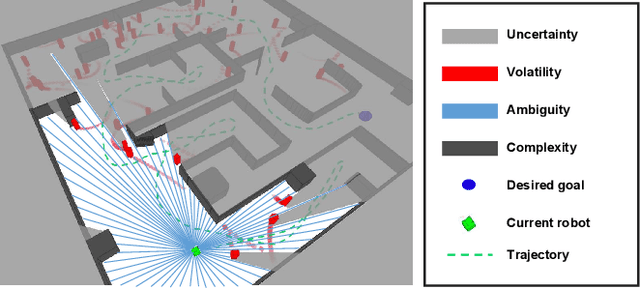
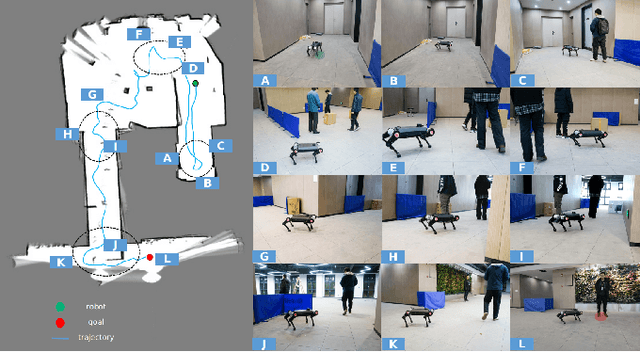
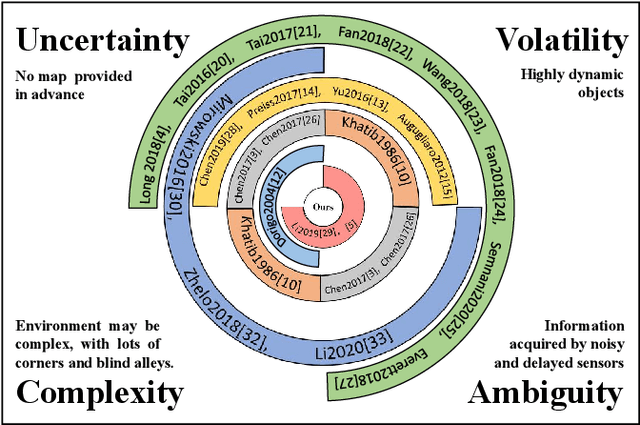
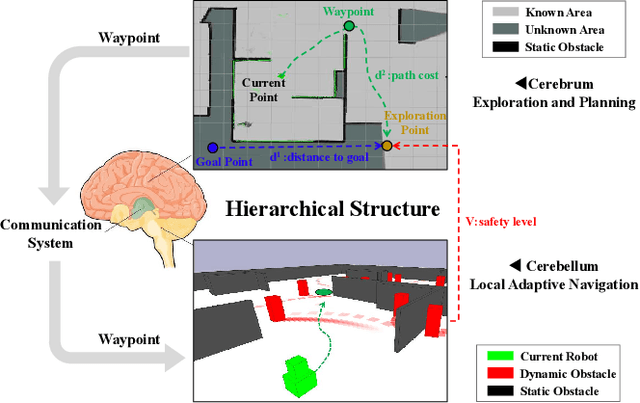
Abstract:Despite decades of efforts, robot navigation in a real scenario with volatility, uncertainty, complexity, and ambiguity (VUCA for short), remains a challenging topic. Inspired by the central nervous system (CNS), we propose a hierarchical multi-expert learning framework for autonomous navigation in a VUCA environment. With a heuristic exploration mechanism considering target location, path cost, and safety level, the upper layer performs simultaneous map exploration and route-planning to avoid trapping in a blind alley, similar to the cerebrum in the CNS. Using a local adaptive model fusing multiple discrepant strategies, the lower layer pursuits a balance between collision-avoidance and go-straight strategies, acting as the cerebellum in the CNS. We conduct simulation and real-world experiments on multiple platforms, including legged and wheeled robots. Experimental results demonstrate our algorithm outperforms the existing methods in terms of task achievement, time efficiency, and security.
Towards Equity and Algorithmic Fairness in Student Grade Prediction
May 14, 2021



Abstract:Equity of educational outcome and fairness of AI with respect to race have been topics of increasing importance in education. In this work, we address both with empirical evaluations of grade prediction in higher education, an important task to improve curriculum design, plan interventions for academic support, and offer course guidance to students. With fairness as the aim, we trial several strategies for both label and instance balancing to attempt to minimize differences in algorithm performance with respect to race. We find that an adversarial learning approach, combined with grade label balancing, achieved by far the fairest results. With equity of educational outcome as the aim, we trial strategies for boosting predictive performance on historically underserved groups and find success in sampling those groups in inverse proportion to their historic outcomes. With AI-infused technology supports increasingly prevalent on campuses, our methodologies fill a need for frameworks to consider performance trade-offs with respect to sensitive student attributes and allow institutions to instrument their AI resources in ways that are attentive to equity and fairness.
Goal-based Course Recommendation
Dec 25, 2018


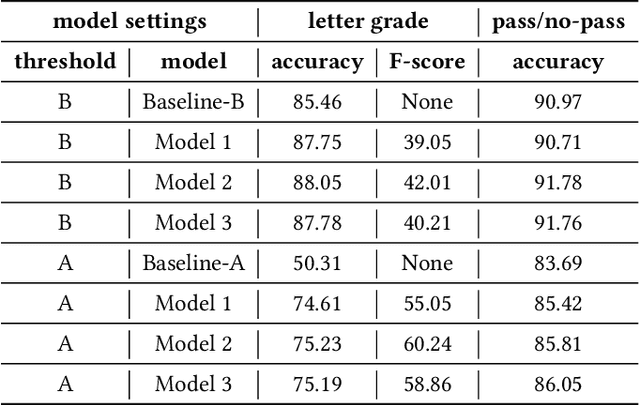
Abstract:With cross-disciplinary academic interests increasing and academic advising resources over capacity, the importance of exploring data-assisted methods to support student decision making has never been higher. We build on the findings and methodologies of a quickly developing literature around prediction and recommendation in higher education and develop a novel recurrent neural network-based recommendation system for suggesting courses to help students prepare for target courses of interest, personalized to their estimated prior knowledge background and zone of proximal development. We validate the model using tests of grade prediction and the ability to recover prerequisite relationships articulated by the university. In the third validation, we run the fully personalized recommendation for students the semester before taking a historically difficult course and observe differential overlap with our would-be suggestions. While not proof of causal effectiveness, these three evaluation perspectives on the performance of the goal-based model build confidence and bring us one step closer to deployment of this personalized course preparation affordance in the wild.
Connectionist Recommendation in the Wild
Sep 15, 2018



Abstract:The aggregate behaviors of users can collectively encode deep semantic information about the objects with which they interact. In this paper, we demonstrate novel ways in which the synthesis of these data can illuminate the terrain of users' environment and support them in their decision making and wayfinding. A novel application of Recurrent Neural Networks and skip-gram models, approaches popularized by their application to modeling language, are brought to bear on student university enrollment sequences to create vector representations of courses and map out traversals across them. We present demonstrations of how scrutability from these neural networks can be gained and how the combination of these techniques can be seen as an evolution of content tagging and a means for a recommender to balance user preferences inferred from data with those explicitly specified. From validation of the models to the development of a UI, we discuss additional requisite functionality informed by the results of a field study leading to the ultimate deployment of the system at a university.
 Add to Chrome
Add to Chrome Add to Firefox
Add to Firefox Add to Edge
Add to Edge